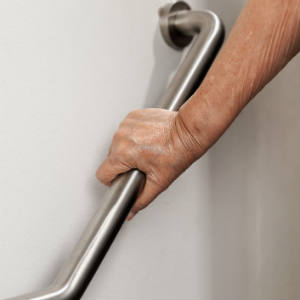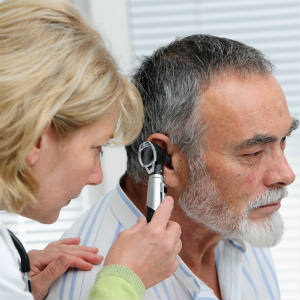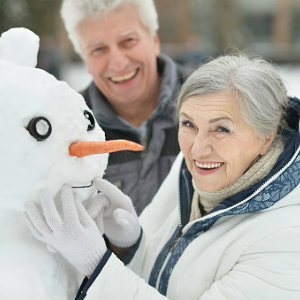Imagine the following: You wake in the middle of the night and need to get out of bed to use the restroom. Or maybe you get home from a night out and need to navigate your way through a portion of your home before you can turn on a light. These scenarios have one thing in common: it’s dark.
According to the National Council on Aging, 1 in 4 Americans over age 65 falls every year. And as nighttime sets in, your risk of falling increases. Here is how you can safely navigate a space in the dark.
Why is the Dark More Dangerous as We Age?
Once we reach our 60s and beyond, our eyes begin to change. As you age, your pupils become smaller and less reactive to changes in ambient lighting. This results in the need for stronger lighting when reading than someone in their 20s would need, for example.
While people may experience common age-related changes like cataracts or the normal loss of focusing ability (think the need for reading glasses when looking at a menu or your phone), some older adults may experience age-related eye diseases. These age-related eye diseases can include macular degeneration, glaucoma or diabetic retinopathy.
How to Reduce Falls at Night
To make your space as safe as possible, the Ohio Department of Aging recommends you:
Use the highest wattage of lightbulb available for your fixtures and choose a compact fluorescent or LED bulb: A higher wattage of lightbulb can make your environment brighter, and an LED bulb or compact fluorescent bulb is longer lasting and more energy-efficient than a standard light bulb. LED lights also emit light in a specific direction (other lighting must be reflected to the desired direction), which makes them especially useful for walkways or when needing a light to do a specific task.
Keep a flashlight near your bed: If you have a smartphone, use its flashlight feature to help light your way if you need to get out of bed in the middle of the night.
Install nightlights between your bedroom and the bathroom: However, don’t just limit nightlights to the area between your bedroom and the bathroom. Having them throughout your home could prove beneficial. If the light from the nightlight disturbs your sleep, try using a flashlight instead.
Replace light switch plates: Use light switch plates that glow in the dark instead.
Reduce clutter, make your space safer: Trying to navigate around clutter is a leading cause of falls. Keep your home safer by ensuring your walking paths are clear. Also, make sure any rugs or cords are securely fastened as these can be tripping hazards.














